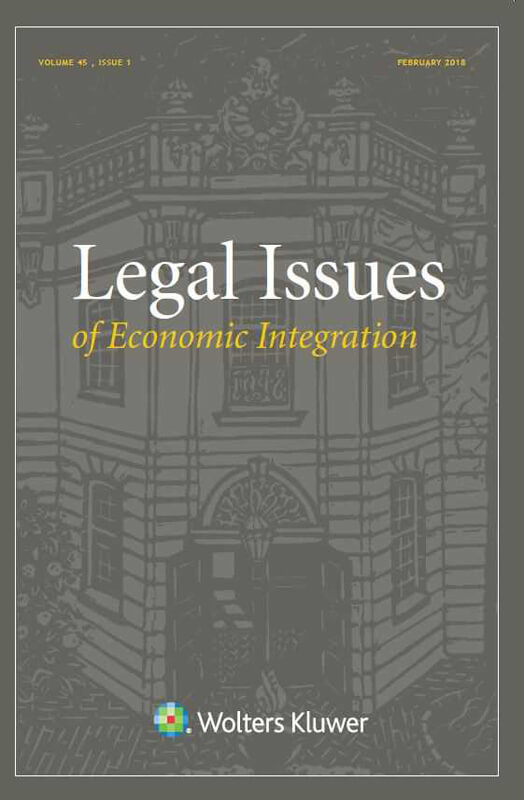Home > All journals > Legal Issues of Economic Integration > 45(3) >

$15.00 - Rental (PDF) *
$29.00 - Article (PDF) *
Matilda J. Brolin, Arnoud Willems
Legal Issues of Economic Integration
Volume 45, Issue 3 (2018) pp. 229 – 251
https://doi.org/10.54648/leie2018013
Abstract
In most countries, the rules concerning anti-dumping and customs reside in different laws. However, since the enforcement of anti-dumping measures is the responsibility of customs authorities, there is necessarily interaction between both areas of law. It is important to get this interaction right. For instance, changes in customs legislation could (inadvertently) increase the number of products covered by anti-dumping measures, arguably violating the rules of the World Trade Organization (WTO). This article examines two key points of tension between customs and anti-dumping laws, which have previously not been given much attention, taking the European Union (EU) as an example. First, the article sets out the problem of two competing interests concerning product description: that of a description that is accurate for purposes of coverage under an anti-dumping regulation, on the one hand, and that of a description that is efficient for purposes of ensuring simple and automatic duty collection by the customs authorities, on the other. It then explains the EU’s practical solution to this problem (TARIC codes), but advises caution regarding that practice. Second, it sets out how the EU uses rules of origin to impose anti-dumping duties on products that otherwise might not be covered, and cautions against that practice as well. Finally, the article discusses how to avoid breaching WTO law and how to ensure certainty and transparency for companies.
Extract
